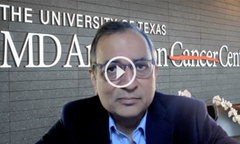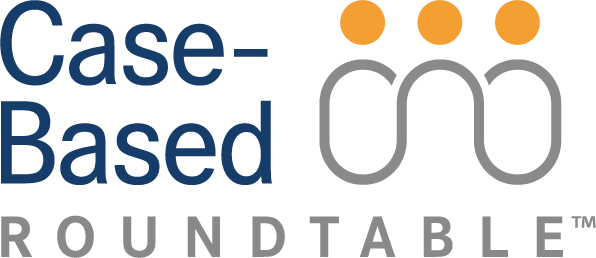
Addition of Durvalumab Improves OS for Advanced BTC

Milind Javle, MD, discusses the use of durvalumab for locally advanced or metastatic biliary tract cancer.
Episodes in this series
Milind Javle, MD, professor in the department of gastrointestinal medical oncology, division of cancer medicine at The University of Texas MD Anderson Cancer Center, discusses the use of durvalumab (Imfinzi) for locally advanced or metastatic biliary tract cancer (BTC).
According to Javle, no regimen in BTC has been shown to improve patient outcomes since the introduction of gemcitabine plus cisplatin. The global phase 3 TOPAZ-1 trial (NCT03875235) randomly assigned patients 1:1 to receive the combination of durvalumab, gemcitabine, and cisplatin versus gemcitabine and cisplatin plus placebo. After 6 months, patients received maintenance therapy with durvalumab or placebo.
The primary end point was overall survival (OS). At a median follow-up of 13.7 months for the durvalumab arm and 12.6 months for the placebo arm, median OS was 12.8 months with durvalumab and 11.5 months with placebo. Additionally, Javle says the OS improvement deepened over time. At 18 months, the OS rate was 35.1% for durvalumab versus 25.6% for placebo, whereas at 24 months, it was 24.9% versus 10.4%, respectively.
Additionally, there was no significant added toxicity, with the rate of grade 3 or 4 adverse events being 75.7% for the durvalumab arm versus 77.8% with the placebo arm. This was a significant trial that led to the FDA approval of durvalumab for previously untreated advanced BTC.
TRANSCRIPTION:
0:08 | The TOPAZ-1 trial was also a very remarkable study because it's been over a decade since gemcitabine and cisplatin were shown to be superior to single-agent gemcitabine. And therefore, the doublet was listed—it was basically Compendia-listed. All subsequent trials, which are combination trials, since then have been negative except this one. This trial included gemcitabine, cisplatin, and durvalumab versus gemcitabine and cisplatin plus placebo given for 6 months, followed by durvalumab maintenance versus placebo maintenance.
OS was the primary end point of the trial. There was an OS improvement between gemcitabine, cisplatin, and durvalumab, as compared with gemcitabine and cisplatin, and this difference in survival appeared to increase with time. So, for instance, at 2 years and 3 years, the [Kaplan-Meier] curves split even further, where 10% survived at the end of 2 years versus 24% in the durvalumab arm. So clearly, this was another advance, and it was achieved without additive toxicity. Patients tolerated the addition of durvalumab very well, without significant toxicities noted with the combination. So this was a significant improvement in the armamentarium that we have currently for treating BTC.











































